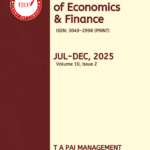
On February 1, 2023, Finance Minister Nirmala Sitharaman presented the Union Budget 2023. The Budget sought to address ongoing challenges and fortify the country for the coming decades. The changes to direct taxation were one of the budget’s main highlights.
The new tax regime has become the de facto standard, and the government has taken five steps to make it more appealing. The old tax regime is still available to taxpayers. The following are the new tax regime slabs for FY 2023-24 (AY 2024-25):
- Up to Rs. 3,00,000: Nil
- 300,000 to Rs. 6,00,000: 5% on income that exceeds Rs 3,00,000
- 6,00,000 to Rs. 900,000: Rs 15,000 + 10% on income more than Rs 6,00,000
- 9,00,000 to Rs. 12,00,000: Rs 45,000 + 15% on income more than Rs 9,00,000
- 12,00,000 to Rs. 1500,000: Rs 90,000 + 20% on income more than Rs 12,00,000
- Above Rs. 15,00,000: Rs 150,000 + 30% on income more than Rs 15,00,000
The new tax regime has supplanted the previous one and is now the standard way of calculating and collecting taxes. It suggests that individuals or businesses are now required to follow the new tax regime’s rules and regulations unless they expressly opt-out and choose a different system. The term “default” implies that the new tax regime is the default option and setting for taxation, and it is applied automatically unless otherwise specified.
Individuals with a net taxable income of up to INR 5 lakh were eligible for income tax exemption under Section 87A under the previous tax regime. However, this limit has been raised to INR 7 lakh in the new budget, but only for those who choose the new tax regime. If you choose the old tax regime, the income tax exemption limit under Section 87A remains at INR 5 lakh.
What is the difference between OLD Tax Regime and New Tax Regime?
In the previous tax regime, you could claim a deduction of up to INR 2 lakh under Chapter VI-A deductions such as 80C, 80CCC, and 80CCD for investing in specified funds. Other deductions are available, such as 80D for medical insurance, 80E for interest paid on education loans, House Rent Allowance, LTA, and so on. However, none of the above-mentioned deductions are available under the new tax regime. In the new tax regime, however, you cannot avail of any of the deductions mentioned above.
Revised Presumptive Taxation Limits: The presumptive taxation limits for Section 44AD (for small businesses) and Section 44ADA (for professionals) have been increased to Rs 3 crore and Rs 75 lakh, respectively. The increase in limits is conditional on 95% of receipts being made through online channels.
Start-ups: The date of incorporation for income tax benefits have been pushed back to March 31, 2024, and the time limit for set-off and carrying forward of losses has been extended to ten years from incorporation.
Co-operative Societies: The government has made several proposals for co-operative societies, including extending the benefit of the concessional tax rate of 15% to new co-operatives, claiming disallowance of expenditure prior to 2016-17, increasing the TDS limit on cash withdrawals to Rs 3 crores, and increasing the limit for cash deposits and loans by Primary Agricultural Co-operative Societies (PACS) and Primary Co-operative Agriculture and Rural Development.
Other Direct Tax Updates: The exemption threshold for leave encashment has been raised to Rs 25 lakh, the TDS rate on taxable EPF withdrawals has been reduced to 20%, payments to MSMEs are now allowed as expenditure only when they are made, there is no penalty under Section 269SS or 269ST, and the capital gains tax exemption under Section 54 to 54F is limited to Rs 10 crores.
How is it beneficial?
The new tax regime of the Union Budget 2023 in India aims to simplify the tax system, increase tax compliance, and provide relief to taxpayers. The key benefits of the new tax regime include:
- Lower tax rates for individuals: The new tax regime offers lower tax rates for individuals who opt for it, compared to the existing tax slabs.
- No exemptions and deductions: The new regime eliminates most of the exemptions and deductions, making the tax system simpler.
- Lower tax liability: Lower tax rates and the elimination of exemptions and deductions can lead to the lower tax liability for individuals.
- Increased compliance: By simplifying the tax system and reducing exemptions and deductions, the new regime aims to increase tax compliance.
- Improved ease of doing business: The simplified tax regime is expected to improve the ease of doing business in India, as it would reduce the compliance burden for businesses.
It is important to note that the new tax regime is optional and individuals can choose to continue with the existing tax regime if they prefer.
Shortcomings of the regime:
1. Higher tax liability for some taxpayers: For some individuals, the new tax regime may
result in higher tax liability due to the elimination of certain exemptions and deductions.
2. Loss of popular tax benefits: Some popular tax benefits such as the standard deduction,
HRA exemption, and LTA exemptions have been removed in the new regime, which can
be a drawback for some taxpayers.
3. The increased tax burden for senior citizens: The new tax regime does not provide any
separate tax benefits for senior citizens, which can result in a higher tax burden for this
demographic.
4. Lack of clarity: There is still some ambiguity regarding the interpretation and
implementation of the new tax regime, which can lead to confusion and difficulties for
taxpayers.
5. Limited options for tax planning: The elimination of most exemptions and deductions in
the new tax regime limits the options for tax planning and optimization.
It is important to weigh the benefits and drawbacks of the new tax regime and choose the
option that best suits your financial situation. Taxpayers should seek professional advice to
understand the impact of the new tax regime on their personal finances.
Some Suggestions for the Public:
Here are some suggestions for individuals to maximize the benefits of the new tax regime of the Union Budget 2023 in India:
- Review your tax liability: Review your tax liability under both the existing and new tax regimes to determine which option is more favorable for you.
- Consider your investment decisions: Review your investment decisions in light of the elimination of certain exemptions and deductions, and make necessary adjustments to minimize your tax liability.
- Seek professional advice: Consult with a tax expert to understand the impact of the new tax regime on your personal finances and to get advice on the best course of action.
- Plan your financial goals: Consider your financial goals and plan your investments accordingly to make the most of the new tax regime.
- Keep track of changes: Stay updated on any changes or clarifications regarding the new tax regime to ensure that you are in compliance with the latest rules and regulations.
It is important to note that the new tax regime is optional and individuals can choose to continue with the existing tax regime if they prefer. It is crucial to consider your personal financial situation and goals when making a decision on which tax regime to choose.
–TJEF Editor
Prachi




















Leave a comment